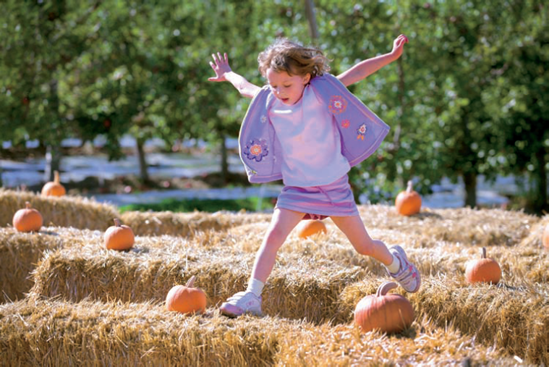Chapter 4. Controlling the Light with Aperture
Aperture is another camera control that changes the quantity of light that reaches the camera's image sensor. While the shutter speed controls the amount of time that light is allowed to reach the sensor, the aperture controls the intensity of light that strikes it. Sometimes referred to as the diaphragm or iris, the aperture is an electronically controlled mechanical opening the light has to pass through in order to make an image. The size of this hole is variable and can be adjusted by the photographer. Aperture is designated by f numbers, with a lower f number signifying a larger opening allowing more light, and a higher f number representing a smaller opening that lets in less light. Understanding aperture and its effect on your photography makes your images stronger and more dynamic.

My daughter Brenna leaps over a hay bale maze at a pumpkin farm in Yakima, Washington. I used a large aperture to blur the background and to keep the focus on her, along with a fast shutter speed to freeze the action. Exposure: ISO 400, f/4, 1/2000 second.
Choosing an Aperture
The relationship between shutter speed and aperture is much easier to understand if you consider a bucket that you are trying to fill with water. In this analogy, the bucket is your sensor and the water represents the amount of light allowed to fall on the image sensor. You can add ...
Get Lighting Digital Field Guide now with the O’Reilly learning platform.
O’Reilly members experience books, live events, courses curated by job role, and more from O’Reilly and nearly 200 top publishers.

